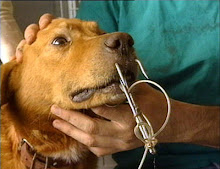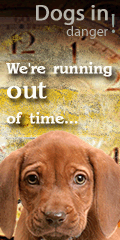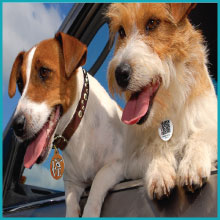Physiotherapy For Arthritic Pets
On receiving an honour, the American entertainer Jack Benny once said, "I don't deserve this award but I have arthritis and I don't deserve that either." Unfortunately, Benny was not alone in suffering from arthritis as he grew older. Arthritis is associated with significant discomfort and simple activities such as going for walks and climbing stairs often become extremely painful. A variety of treatments are available, usually involving a combination of drugs and physiotherapy, but these generally only address the symptoms rather than curing the condition.
Unsurprisingly, animals can also suffer from arthritis. And because pets, especially dogs, tend to accompany their owners closely, they also go for walks and climb stairs, activities that become difficult and painful for dogs with arthritis. Treatment of the condition relies on the use of painkilling drugs combined with physiotherapy. The aims of physiotherapy - in dogs as in humans - are to lessen pain and to improve the functions of the affected joints and limbs. A number of different physiotherapy regimes are available but until recently there had been only very limited investigations of their affects on dogs. This has changed with the appearance of a paper by Peter Holler in Barbara Bockstahler's group at the University of Veterinary Medicine, Vienna in the current issue of the American Journal of Veterinary Research.
Using a specially designed treadmill and sophisticated computer algorithms, Holler and his colleagues examined the movements of the joints in the front and back legs of dogs performing three different types of exercise used in physiotherapy: walking uphill, walking downhill and walking over low obstacles. They compared the findings with the movements when the dogs walked on the level without obstacles. Their results were extremely revealing. Walking uphill caused significantly greater bending at the hip, while the stifle joint (the dog's knee) was less extended. There were also decreases in the accelerations at the carpal and elbow joints. Walking downhill caused the hip to be less bent and the tarsal joint to be less extended, while there were decreases to the accelerations at the elbow and the hip. The most significant effects came when the dogs walked over low obstacles, which resulted in increased bending of all joints except the hip and the shoulder and greater extensions of the carpal and stifle joints.
In summary, the experiments showed that the three regimes had different and specific effects on the movements of the dogs' joints. Walking downhill does not appear to have much therapeutic benefit but walking uphill and the use of obstacles could both play a part in therapy. Walking uphill is an easy exercise that could be used to improve the flexibility of affected joints, particularly of the hip, while walking over low obstacles could be useful for improving the bending of joints in the fore- and hind limbs, although it should be noted that dogs that have recently undergone surgery to the tibia should probably avoid walking over obstacles as the resulting increased bending of the joints could potentially strain the tendon that joins the knee to the shin..
Neither walking uphill nor walking over obstacles requires expensive special equipment. Furthermore, both programmes are simple and can be easily supervised by the dogs' owners. As Bockstahler says, "These types of exercise are often recommended to improve the flexibility of joints in arthritic dogs. Nobody has yet taken the trouble to test whether they work but we are happy to report that they are of real benefit to the animals."
The paper:
Kinematic motion analysis of the joints of the forelimbs and hind limbs of dogs during walking exercise regimens by Peter J. Holler, Verena Brazda, Barbara Dal-Bianco, Elisabeth Lewy, Marion C. Mueller, Christian Peham, and Barbara A. Bockstahler is published in the July 2010 issue of the American Journal of Veterinary Research (AJVR 71, Vol. 7, 734-740).
Source:
Barbara Bockstahler
University of Veterinary Medicine -- Vienna
Saturday, August 28, 2010
Subscribe to:
Post Comments (Atom)

















No comments:
Post a Comment